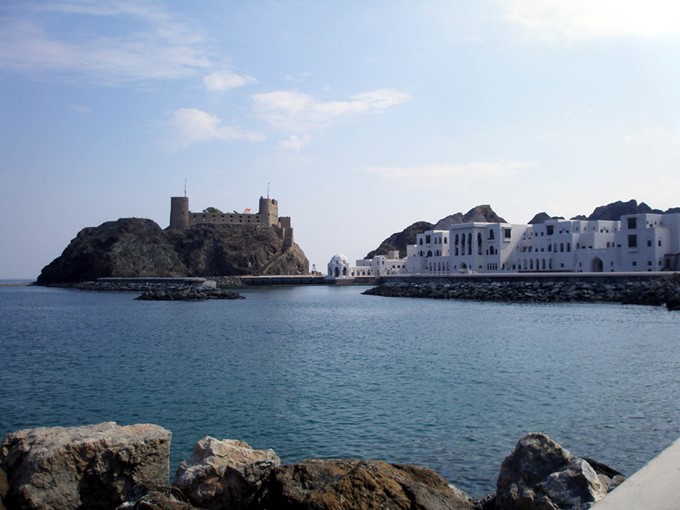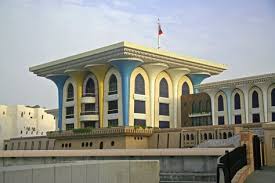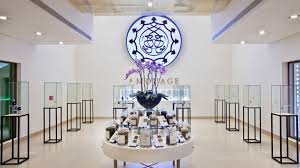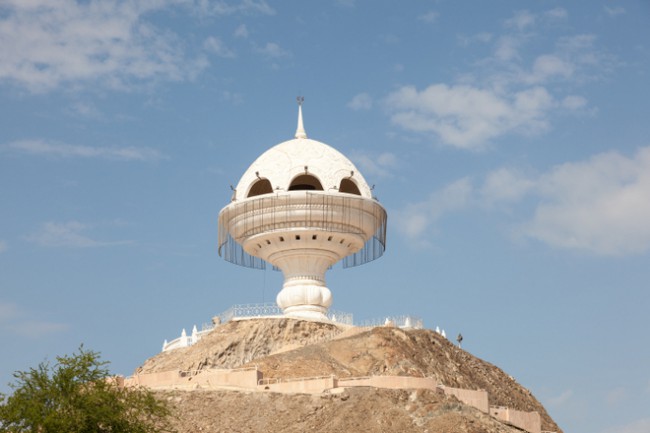
Muscat City (Oman) sightseeing
Posted on |
Today I will share some interesting stuff about Muscat City, which is Oman’s capital.
Muscat is in northeastern Oman. The Cancer Tropic is passing south of the area. It is bordered by the Al Batinah region’s plains to its west and the Ash Sharqiyah region to its east. The interior plains of the southern border of the Ad Dakhiliyah region of Muscat, while the northern and western periphery of the city is the Gulf of Oman.
A decade after the successful voyage of Vasco da Gama around the Cape of Good Hope to India in 1497–98, the Portuguese arrived in Oman and occupied Muscat from 1507 to 1650 for a period of 143 years. Their fortress is still there. In need of an outpost to protect their sea lanes, the Portuguese built up and fortified the city, where remnants of their colonial architectural style still exist. An Ottoman fleet captured Muscat in 1552, during the fight for control of the Persian Gulf and the Indian Ocean.
In 1581, the Ottoman Turks captured and held Muscat from the Portuguese until 1588. Rebellious tribes eventually drove the Portuguese out, but the leader of an Omani tribe, who began the current line of ruling sultans, pushed them out about a century later, in 1741. Oman has been self-governing since the late 1740s, with the exception of a brief Persian invasion.
- Grand Mosque, Muscat

This glorious piece of modern Islamic architecture, quietly imposing from the outside, was a gift from Sultan Qaboos to the nation to mark his 30th year of reign. The main hall of prayer is amazingly beautiful. The Persian carpet alone is 70 m by 60 m wide, making it the world’s second largest hand-loomed Iranian carpet; it took 600 women to weave for four years. Busses from Mwasalat stop outside the mosque.
2. Mutrah Corniche

Mutrah Corniche is a 3 km long waterfront promenade lined with restaurants, cafes and markets. Relax in the corniche and watch the sun go down the sea and watch the mountains meet the water or enjoy all the natural sights and sounds of the promenade.
3. Bayt Al Zubair

Bayt Al-Zubayr is a private museum located in the old town of Muscat with relics from the military, social, and cultural past of Oman. In 1998, it opened its doors to the public and is founded and funded by the family Zubair. The extensive collection of Omani artifacts such as weapons, khanjars, jewelry, household items and costumes by the family is considered to be the finest collection of private property. The collection is extensive and provides insight into the heritage of Arab and Omani.
4. Mutrah Souk

The Muttrah Souq (17 km from downtown) is one of the Arab world’s oldest markets. Maybe this antique has increased its beauty, magic and allure. Mutrah Souk or Al Alam Souk has been named after darkness because the crowded stalls and lanes do not allow the sun rays to infiltrate through during the day and the shoppers need lamplights to see where they were going. The market used to be a supply source for Omanis where they could buy their needs for simpler lifestyle requirements in the 1960s.
5. Al Mirani Fort

Al Mirani Fort (19 km from downtown) is a Muscat fort built in the sixteenth century by the Portuguese. It looks out to the Gulf of Oman along with neighboring Al Jalali Fort and in the past would guard Muscat’s port.
Despite being closed to the public visitors, this fort can be seen from outside. This fort was instrumental in the Portuguese’s downfall.
6. Sultan’s Palace

Located in the heart of Old Muscat, Al Alam (Flag) Palace is the futuristic and funky ceremonial residence and the largest of the six royal residences of Oman’s reigning Sultan Qaboos bin Said. Although the palace itself is not open to visitors, you can walk in front of the palace around the yards and gardens. The Sultan doesn’t use this palace much as he prefers the quieter one in Seeb, but he has received distinguished visitors here such as the Queen of England and the Queen of Netherlands.
7. Royal Opera House

The Royal Opera House (7 km from downtown) is the Arabian Peninsula’s first opera house and Oman’s leading music, arts and culture destination. The complex consists of a theater, an auditorium, landscaped gardens, an art center, and cultural markets that can accommodate 1,100 people. The Royal Opera House has been ordered to be built in 2001 by Sultan Qaboos of Oman, who is a fan of classical music and arts. The house officially opened in 2011 with a production of the Spanish opera Turandot.
8. Bimmah Sinkhole

The tourists visiting Oman’s’ Muscat Governorate’ can see a deep sinkhole called Bimmah Sinkhole (91 km from downtown), imaginatively named as Hawiyat Najm and filled with clear water. Located between Bimmah & Albibāb towns, this is an amazing place to swim and enjoy the region’s beautiful landscape. The local municipality has created the Hawiyat Najm Park that surrounds the Bimmah sinkhole as a form of protection. Visitors passing through the area often stop here for a few hours of respite from the scorching sun.
9. Amouage Perfumery

At Amouage Perfumery (12 km from the city center) and Visitor Center in Muscat, you will have the opportunity to witness how this company creates from scratch its amazing fragrances. From getting ingredients from their in-house facilities to distilling, filtering and packaging, this tour will give you a close look at everything behind Amouage’s signature products. The factory tour is free and quite informative.
10. Al-Riyam Park

Al-Riyam Park is at Mutrah’s Old Muscat end. There’s a playground near the corniche and you can walk up to a famous, giant incense burner.
I have to confess that I was too lazy to walk, but it’s meant to be a great view of Mutrah back.
11. Big Bus Tour

Hop on one of the hop on, hop off Big Bus Muscat bus tours is the easiest way to see all the Muscat tourist spots. This is what I did as it removed the annoyance of working out (overpriced) tariffs with taxi drivers and meant that I also found out a ton of Muscat information while I was on the bus. It stops at just about everything mentioned above with the only main thing missing being the Grand Mosque.